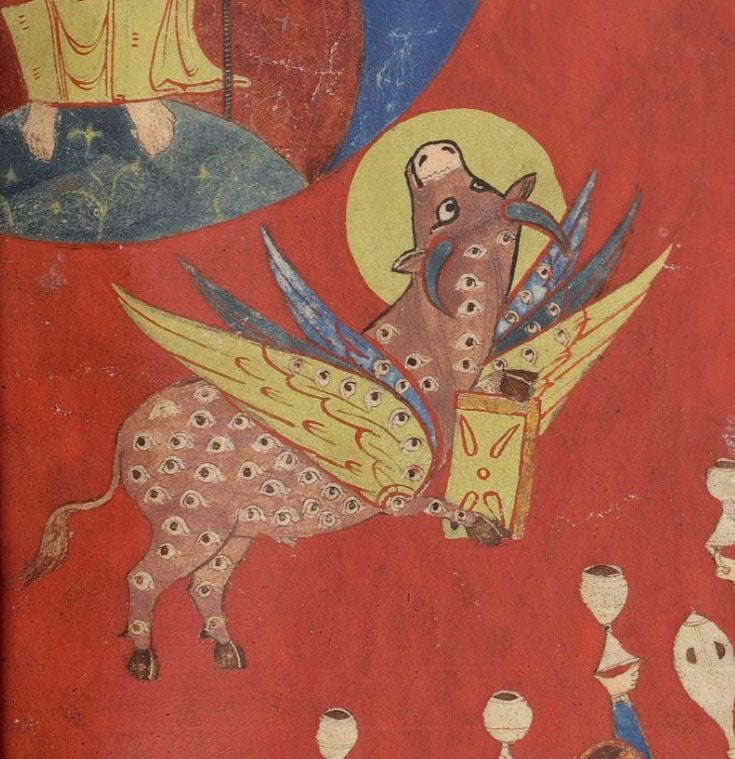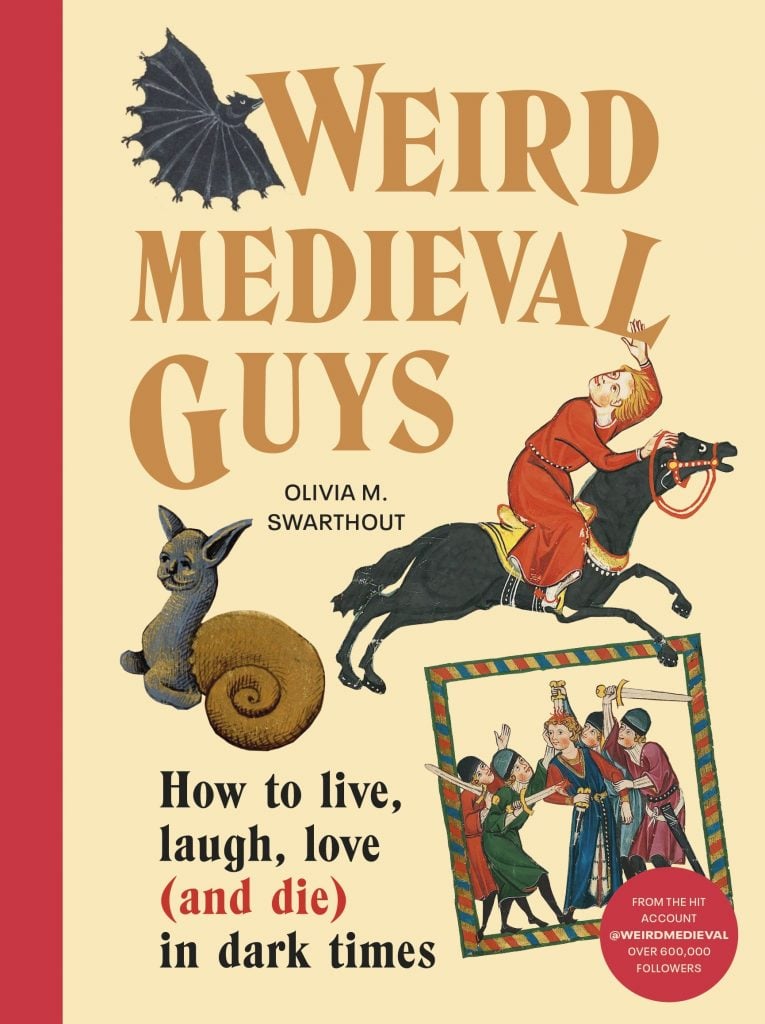Pop Culture
Meet the Woman Behind ‘Weird Medieval Guys,’ the Internet Hit Mining Odd Art From the Middle Ages
Olivia Swarthout's new book unearths all that's weird and wonderful about this period of art history.

Olivia Swarthout's new book unearths all that's weird and wonderful about this period of art history.

Min Chen

A half-man, half-bird beast playing a flute. A cat’s head popping out of a snail shell. A woman barfing up a tiny demon. These are just some of the otherworldly critters that scribes in the Middle Ages once thought worthy of immortalizing in manuscripts as representatives of folklore or myth. To Olivia Swarthout, though, they’re quite simply her Weird Medieval Guys.
Since 2019, Swarthout has been gathering images of the bizarre and fantastical drawings she’s found in Medieval manuscripts, art, and tapestries on X (formerly Twitter) as @WeirdMedieval. Her posts are accompanied by relevant sources and the quippy, pithy captions you would expect of the medium. A cow, pulled from an 11th-century French manuscript, wearing wings dotted with eyeballs? A “normal cow,” of course.
can’t talk rn, doing whatever this is pic.twitter.com/QMFuLsjhEQ
— weird medieval guys BOOK OUT NOVEMBER 2!! (@WeirdMedieval) August 16, 2023
“A lot of it is about showing characters, people or creatures in medieval art that jump out of the page and have their own personality,” Swarthout told me about her work. “Humor is a really big part of it. I think it’s what makes people connect with it—they want to be in on the joke.”
In the few short years since her first post, the London-based Swarthout has gained upwards of 680,000 followers on X and more than 5,000 subscribers on Substack. She’s further developed a podcast that similarly uncovers all that’s weird and wonderful about the Middle Ages—recent episodes include “What’s the deal with jesters?” and “Would a single Dorito really kill a Medieval peasant?”
Now, Swarthout has compiled an entire book on the subject. Titled Weird Medieval Guys: How to Live, Laugh, Love (and Die) in Dark Times, the volume is a jolly trek through Medieval art and life via quizzes, how-to guides, and absurdist diagrams. Ancient fishes, dragons, and serpents appear across the pages, but so do human characters who are troubled by love, seeking their patron saint, or being visited by birds on their death bed.

Weird Medieval Guys by Olivia M. Swarthout. Photo courtesy of Square Peg.
Yes, the bulk of Swarthout’s work is humorous and tongue-in-cheek, but it comes from a place of admiration and appreciation for “the depth and breadth of the subject matter, skills, and styles in Medieval art,” she said.
Her fascination with the art of the Middle Ages was sparked by an art history class she attended while working on her statistician’s degree. Her decision to create a platform for the oddities she discovered while combing the online archives of museums and libraries was her way of developing and connecting with that interest.
On launch, Weird Medieval Guys joined a cadre of social media posts and dedicated accounts, such as @medievalcats, that were surfacing art from the Medieval margins (see: penis nun). For Swarthout, they indicated a “pre-existing interest” in art history, but one that could also cause occasional “misrepresentation.”
“A lot of people see the drawings, which look maybe anatomically inaccurate or don’t look like something that they expect to see in a historical art piece, and they assume that Medieval artists were naive or untalented, but I felt like there was sort of a deeper story to tell,” she explained.
need to know more about this bird woman who’s spinning wool and drinking wine. what’s her story. is she single pic.twitter.com/gCIfaGcV4G
— weird medieval guys BOOK OUT NOVEMBER 2!! (@WeirdMedieval) August 24, 2023
For one, she pointed out the preconception that Medieval manuscripts were created by monks or disciples when most were made by people at their day job. They were regular folk working on commissions from clients looking to have their own prayer books, which served a status symbols. These artists, said Swarthout, “were aware of the subject matter, [but] were riffing on that, combining it with things from folklore and daily life, and things from their own minds and creativity.”
Swarthout herself is drawn to the surfeit of animal depictions in Medieval art, particularly the many examples of hedgehogs carrying fruit on their spines. “Stuff like that,” she said, “a lot of it is really familiar material or a familiar subject, but it’s portrayed in a way that’s totally different to how someone might portray it today.”
there is a myth in europe that hedgehogs use their spines to carry fruit home. while this isn’t true, people have believed it for millenia–in part because it’s such a cute idea!!
in honor of harvest season, here are my fave medieval depictions of the hedgehog harvest 🍎🍎🍎 pic.twitter.com/0TCuAvkenN
— weird medieval guys BOOK OUT NOVEMBER 2!! (@WeirdMedieval) September 30, 2023
In fact, there’s a lot in Medieval documents that departs from contemporary values—the antisemitic stereotypes, for one, or the contempt toward religions that aren’t Christianity. For Swarthout, who is Jewish, running her X account and writing her book meant learning how these attitudes infused the art of their day, but also understanding that they are of their day.
“It’s trying to explore the way that religion and Christianity impacted this art, while creating a clear separation between my beliefs and those ideas. It’s also trying to highlight the ways that society has changed and improved, while still making it feel natural,” she said.
“An interesting thing for me to explore was the idea of telling a story through medieval images and medieval information without inserting myself as the author, and just trying to tell it from the perspective of a real weird Medieval guy.”
Weird Medieval Guys: How to Live, Laugh, Love (and Die) in Dark Times is out now on Square Peg by Penguin.
More Trending Stories:
Revealed: The Major Mystery Consignors of New York’s Multi-Billion-Dollar Fall Auction Season
Christie’s Pulled Two Works by a Prominent Middle Eastern Artist From Sale After a Complaint